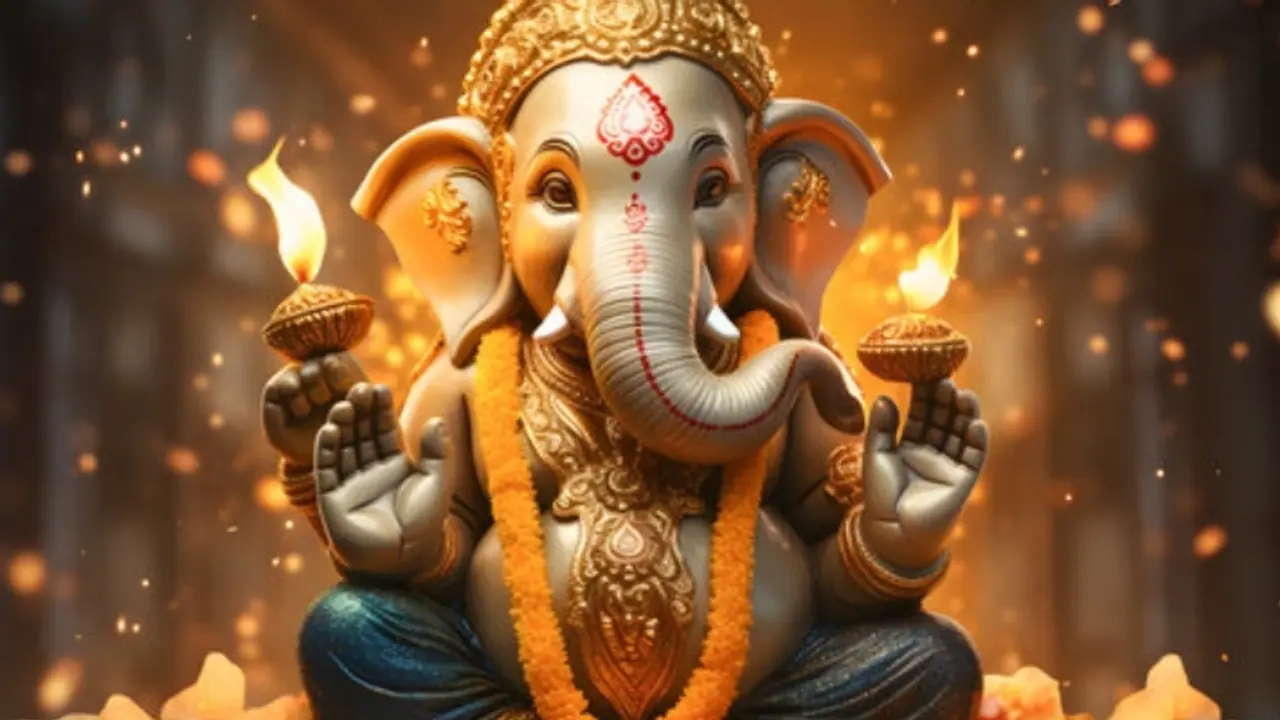Ganesh Chaturthi 2024: Ganesh Chaturthi 2024, commemorating Lord Ganesha's birth, will begin on September 6 and last until September 17. The auspicious hour to welcome Lord Ganesha begins at 03:01 PM on September 6. Rituals include Pranapratishtha, Shodashopachara, Uttarpuja, and Visarjan puja, with Modak serving as the unique prasad to Lord Ganesha.
Ganesh Chaturthi, also known as Vinayaka Chaturthi and Ganesh Chauth, is one of India's most colourful celebrations, especially in Maharashtra and surrounding places. This festival commemorates the birth of Lord Ganesha, the elephant-headed god worshipped for intelligence, good fortune, and wealth. Lord Ganesha represents three fundamental virtues: Buddhi (knowledge), Siddhi (spirituality), and Riddhi (prosperity).

The celebration, held in the Hindu month of Bhadrapada, generally takes place in August or September and lasts 10 days, culminating in the Ganesh Visarjan, or idol immersion. From massive public processions in Maharashtra to private household rituals in other regions, the festival encourages a sense of belonging and spiritual rebirth. Here's all you should know.
Ganesh Chaturthi 2024: Important dates and auspicious times
Ganesh Chaturthi 2024 festivities will commence on September 7, with the idol's immersion slated on September 17. According to Drik Panchang, the Chaturthi Tithi begins at 3:01 PM on September 6 and ends at 5:37 PM on September 7. The best time to install the Ganesh idol is during the Madhyahna Muhurat, which is from 11:07 AM to 1:33 PM on September 7.
The Significance of Ganesh Chaturthi: Why We Celebrate and History
Ganesh Chaturthi is rooted in mythology and commemorates Lord Ganesha's creation and rebirth. According to Hindu mythology, Goddess Parvati built Lord Ganesha out of sandalwood paste when Lord Shiva was gone. She made him to protect her privacy as she bathed.
When Lord Shiva reappeared and sought to enter the room, Ganesha barred his path per his mother's orders. This infuriated Lord Shiva, and the two got into a fight. Later, Lord Shiva detached Ganesha's head from his body.
Witnessing the devastation, Goddess Parvati turned into her terrible Kali form and swore to destroy the cosmos. To placate her, Lord Shiva sent his servants to find the head of a sleeping kid. The search led them to the head of a young elephant, which they returned. Shiva joined the elephant's head to Ganesha's body, reviving him.
This occasion marks the beginning of Ganesh Chaturthi, a 10-day event attended with considerable enthusiasm. Families and friends gather to worship Ganesha, asking his blessings for wealth, knowledge, and good fortune. Celebrations involve lively dancing, cooking delicious meals, and attending joyful parties.
Fasting rules and rituals:
- On Ganesh Chaturthi, devotees generally fast and avoid particular meals throughout the day. The fasting regulations vary, but most individuals forgo grains and pulses.
- Instead, they use fruits, nuts, and milk-based delicacies as gifts to Lord Ganesha during the puja.
- Ganesh Chaturthi is widely celebrated in Maharashtra, Gujarat, Karnataka, and Andhra Pradesh, with ornate pandals (temporary structures) created to house the idols.
- These pandals frequently feature themes ranging from cultural motifs to modern concerns, which draw vast audiences of devotees.
- Devotees make modaks, laddoos, and other sweets that are considered Lord Ganesha's favourites. These are brought before the idol as offerings.
- The aarti ceremony consists of waving a lighted lamp in front of the idol while singing devotional songs glorifying Lord Ganesh.
- On the festival's last day, the idol of Lord Ganesha is carried in a procession for immersion in water, accompanied by prayer chanting and drum beating.
- This ceremony represents the natural cycle of creation and disintegration.
- In recent years, there has been an increased emphasis on environmentally responsible Ganesh Chaturthi celebrations.
- Many devotees use clay idols and natural materials for embellishments to reduce the environmental effect of the immersion procedure.
